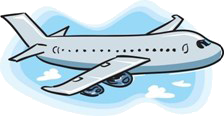 On Monday, April 13, 2015, we all heard or read the story of the baggage handler who was trapped in the luggage compartment of Alaska Airlines Flight 448. When the crew heard him banging in a panic, the flight made an emergency return trip to Seattle. A drug test showed that he was completely sober.
On Monday, April 13, 2015, we all heard or read the story of the baggage handler who was trapped in the luggage compartment of Alaska Airlines Flight 448. When the crew heard him banging in a panic, the flight made an emergency return trip to Seattle. A drug test showed that he was completely sober.
The supervisor of this baggage handler also seems to have been “sleeping on the job.” You may say that I’m jumping to conclusions and perhaps I am. I know from the employee opinion surveys we have conducted in companies of all kinds that certain shift worker employees have a long-standing reputation for finding special spots for taking naps. This seems to be well known by their crews, and yet nothing is done about it. If you don’t stand up for standards, if you don’t define standards and inspire all team members to follow these standards, there are high costs—the soft costs of image and morale and the hard costs of operations and profits. Your job as a manager, as a leader, is to maximize the value of all resources. This baggage handler was certainly not providing full value for Alaska Airlines.
My most recent book, 15 Principles of Engaging Leadership, may have helped the baggage handler’s supervisor secure the engagement required to keep his crew awake. Was this the first time this baggage handler had taken a nap in a baggage compartment? Is he usually alive, awake, alert, enthusiastic? Is he giving his heart and head to the job? The answers to these questions may be obvious.
Let’s look at the costs of this little nap. Alaska Airlines stock price did drop on April 14. Certainly the airlines underwent some hard costs, including the fuel for takeoff and landing. “Jet fuel is the second-largest expense to airlines after labor and can amount to 20 percent of companies’ operating expenses. Planes use the most fuel . . . during takeoff.” (Planes Utilize Most Fuel During Takeoff. Worldwatch Institute. April 15, 2015). The inconvenience to the passengers on this flight cannot be overestimated. Those making connections to other flights no doubt found it difficult or impossible to make those connections.
Alaska Airlines is an extremely well-managed company. “Alaska . . . keep(s its) costs down in part because it measures obsessively. The airline has established 50,000 points of data to improve its on-time performance, from the time bags are loaded and passengers board to when the pilot pushes back from the gate. It also figured out that if it could shave just a minute of taxi time from each flight, it could save 500 minutes, or over eight hours, a day—the equivalent of flying an extra plane daily” (Alaska Airlines Flying Above an Industry’s Troubles. The New York Times. March 2, 2013).
Now some are calling for more federal regulations to make it safer for napping baggage handlers. I am amazed how quickly some want to shift the responsibility from the sleeping baggage handler to the airline industry. If we don’t hold people responsible for their actions, we create an irresponsible society. If no one takes personal responsibility for quality and performance, you will not fly high; in fact, you may not be able to get off the ground.

 Larry W. Dennis, Sr. President,
Turbo Leadership Systems©
Larry W. Dennis, Sr. President,
Turbo Leadership Systems©
